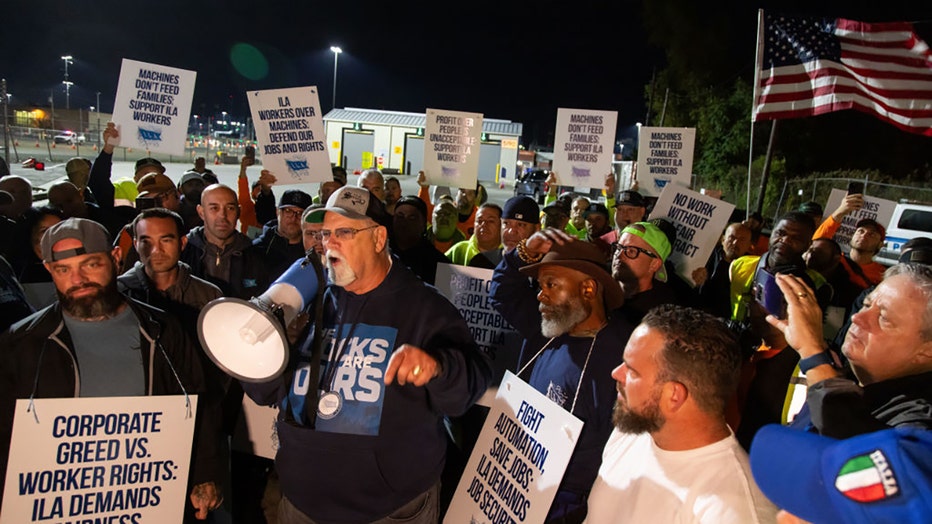Strike at ports update: 45,000 stop work along East Coast, Gulf docks
A labor agreement involving thousands of dockworkers along the East and Gulf coasts lapsed on Monday, signaling them to walk off the job overnight.
The strike over wages and automation could reignite inflation and cause shortages of goods if it goes on for more than a few weeks, experts say.
The contract between the ports and about 45,000 members of the International Longshoremen’s Association (ILA) officially expired at midnight, and even though progress was reported in talks on Monday, the workers went on strike.
The strike affecting 36 ports is the first by the union since 1977.

FILE - Harold Daggett, president of the International Longshoremens Association (ILA), center, speaks to picketing workers outside of the APM container terminal at the Port of Newark in Newark, New Jersey, US, on Oct. 1, 2024. Photographer: Michael N
Here is what to know about the labor dispute and effects of the strike:
Dockworker labor dispute
For the strike to end, the ILA, which represents 45,000 members at East and Gulf coast ports, needs to make a deal with the United States Maritime Alliance (USMX), which represents the ports.
Much of the labor dispute involves the addition of new technologies to U.S. ports that the union says could ultimately cause job losses.
The union is demanding a total ban on the automation of cranes, gates and moving containers in the loading and unloading of freight, along with significantly higher wages.
West Coast dockworkers belong to a different union and aren't involved in the strike.
What does the port strike affect?

Some of the locations where dockworkers are on strike (FOX)
The port strike is affecting operations at 36 U.S. docks stretching from Maine to Texas, which means the number of goods coming in and out of the country will begin lessening by the day.
Just how long the strike lasts depends on how severely the supply chain could be affected.
If drawn out, the strike would force businesses to pay shippers for delays and cause some goods to arrive late for peak holiday shopping season — potentially impacting delivery of anything from toys or artificial Christmas trees, to cars, coffee and vegetables.
Americans could also face higher prices as retailers feel the supply squeeze.
"Everyone from the shipping lines to trade groups and maritime industry analysts also warns of widespread ramifications in the global supply chain," reported The Maritime Executive, a maritime industry magazine and newsletter. "Sea-Intelligence has estimated that for each day of a strike, it would take four to six days to clear the backlog. They wrote that even a two-week strike could have ramifications into 2025."
FOX Business reported that JP Morgan issued an estimate that a strike would cost the U.S. economy as much as $5 billion a day.
White House intervention
All eyes are on what, if any, action the Biden administration might take — particularly just weeks ahead of a tight presidential election.
The president has the power to order an 80-day cooling-off period, suspending the strike, under the 1947 Taft-Hartley Act. But Biden has indicated he’s not interested in intervening.
"Because it’s collective bargaining, I don’t believe in Taft-Hartley," he said during an exchange with reporters on Sunday.

